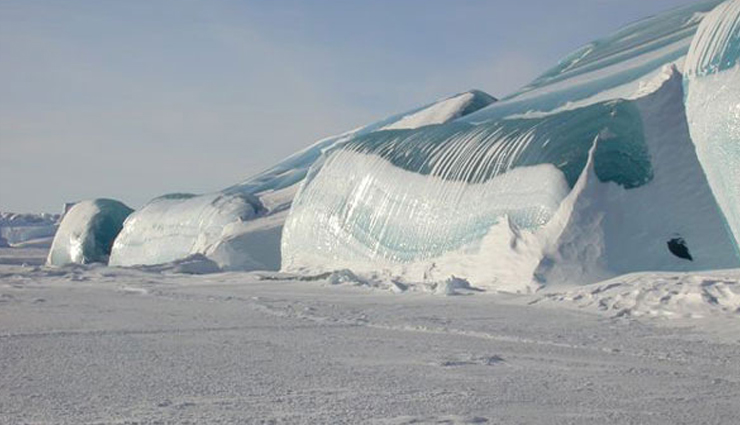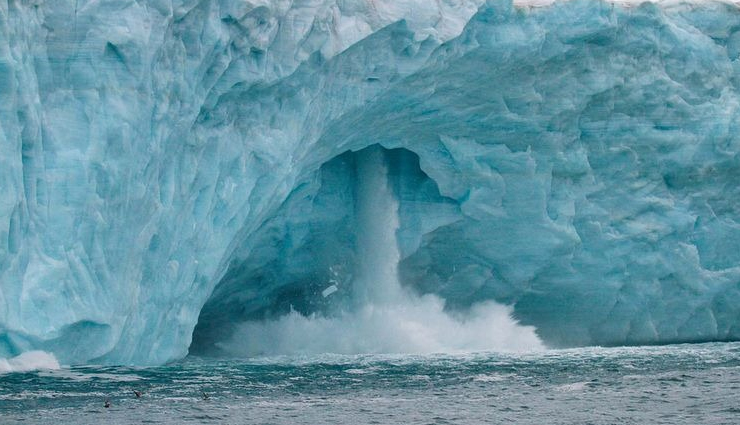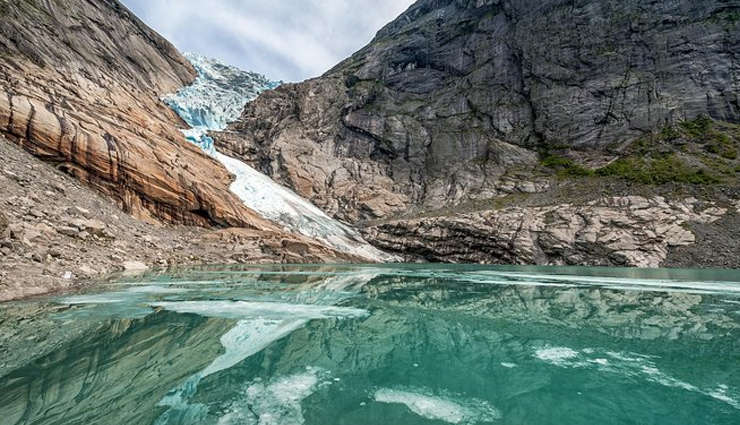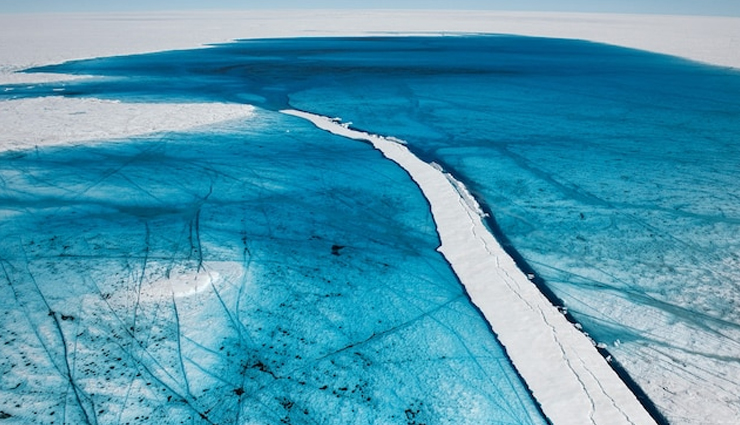5 Must Visit Wonders Of The Ice World
By: Kratika Thu, 17 Mar 2022 2:29:11

In polar and other cold regions there are ice, snow and water formations that are unusual, unique, and some of them so beautiful they take your breath away. Most of these wonders of nature can be visited only by scientists and rare adventurers who are ready for significant physical and financial exertions. Because of their volatility and locations, these formations can be seen only at certain periods of the year.

# Blue River, Greenland
This river is a kayaking heaven in Greenland. The melting Petermann Glacier fill up the low lying areas with stunning blue water. The filling pattern changes seasonally causing the river to change its shape. The vibrant blue color comes from glacial silt.

# Glacier Waterfalls in Svalbard, Norway
Svalbard, which means "cold coasts", is an archipelago in the Arctic, constituting the northernmost part of Norway as well as of Europe. It is located about 400 miles (650 km) north of mainland Europe, midway between mainland Norway and the North Pole. Despite being so close to the North Pole, Svalbard is comparatively warm, thanks to the warming effect of the Gulf Stream, which makes it habitable. In fact, Svalbard is the northernmost permanently inhabited region on the planet.

# Crystal Cave, Iceland
This cave in the glacier ice is the result of glacial mill, or Moulin where rain and melt water on the glacier surface are channeled into streams that enter the glacier at crevices. The waterfall melts a hole into the glacier while the ponded water drains towards lower elevations by forming long ice caves with an outlet at the terminus of the glacier.
The fine grained sediments in the water along with wind blown sediments cause the frozen meltwater stream to appear in a muddy colour while the top of the cave exhibits the deep blue colour. Due to the fast movement of the glacier of about 1 m (3 ft) per day over uneven terrain, this ice cave cracked up at its end into a deep vertical crevice, called cerrac. This causes the indirect daylight to enter the ice cave from both ends resulting in homogeneous lighting of the ice tunnel.

# Briksdal Glacier, Norway
Briksdalsbreen or Briksdal glacier is one of the most accessible and best known arms of the Jostedalsbreen glacier. It is located in Norway and is part of Jostedalsbreen National Park. Briksdalsbreen terminates in a small glacial lake, Briksdalsbrevatnet, which lies 346 metres (1,135 ft) above sea level.
Visitors from all over the world come to see the beautiful Briksdalsbreen glacier outlet, so beautifully situated amid waterfalls and high peaks.

# Birthday Canyon, Greenland
Birthday Canyon, carved by meltwater, is 150 feet (45 m) deep. This photo was taken in 2008. Along the edge of the canyon, lines on the wall show the stratigraphic layers of ice and snow laid down over the years.
EIS field assistant, Adam LeWinter stands on the NE rim of Birthday Canyon, atop feature called “Moab”. Black deposit in bottom of channel is cryoconite - powdery windblown dust which is deposited and builds up on snow, glaciers, or icecaps.





